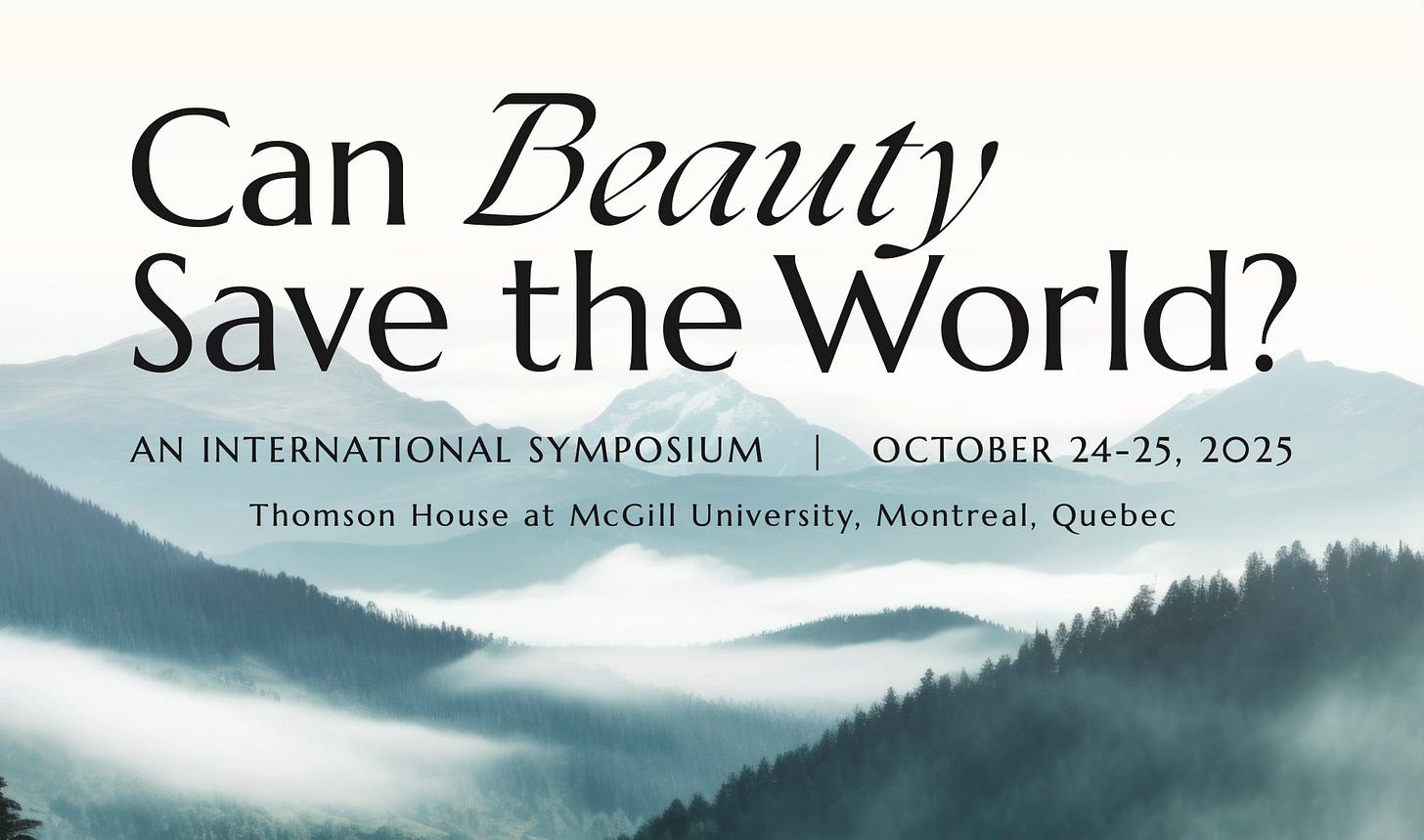I was delighted to return to McGill University last week to host our international symposium, Can Beauty Save the World? to launch a new international research study sponsored by the John Templeton Foundation.
Our event coincided with McGill’s homecoming weekend and in many ways it was homecoming for me. I lived on campus at McGill in the early 2000s (when I was a masters student at HEC); I met my wife there, as well as many dear friends who have shaped my life profoundly. To be back on campus to launching a major new initiative felt like coming full circle.
I can still sense, somewhere deep in my body, the anxious restlessness that once defined those years. I foisted on patient friends and mentors all the angst of not knowing what I was meant to do, frustrated by the limits of my studies, unable to connect my academic work to the questions that truly gripped me: the search for meaning, for vocation, for direction, for clarity. So to return now to host an event with many of those very mentors and heroes and with friends old and new, and to find that the questions I once wrestled with have not so much been answered as lived through and gathered up into something larger, something capacious enough to hold them all—beauty—that, to me, is particularly beautiful.
Why the title?
Our event and project title comes from Dostoevsky’s The Idiot. The phrase “Beauty will save the world” is attributed to the novel’s protagonist, Prince Myshkin—Dostoevsky saw this character as a “positively beautiful” hero, an exemplar of moral beauty.
But Myshkin never utters the phrase himself. It’s spoken about him, once mockingly, then reproachfully, and he offers no defense or explanation. Dostoevsky seems to leave the meaning open.
By phrasing our theme as a question (“Can beauty save the world?”) we wanted to preserve that openness. We’re not echoing the cynicism of the nihilist nor making a rhetorical claim. We mean it as a genuine inquiry: In what sense might beauty save the world—what kinds of beauty and under what conditions?
Why the question matters
My own fascination with this question began years ago in graduate school. In a sociology seminar on social movements, we read that protest is driven primarily by moral outrage or negative shocks. That struck me as incomplete. Why do we care enough to fight for something in the first place?
It was around that time that I encountered Elaine Scarry’s On Beauty and Being Just and her bold claim that our commitment to justice arises from a prior encounter with and commitment to beauty. I couldn’t completely buy the argument, but that book changed me.
Not long after, while studying scientists’ lives and motivations, I found something similar: when asked why they endured low pay and constant frustration, many replied simply, “Because it’s beautiful.” That came as a surprise to me. Beauty was not a word I would have associated with science—but for them, it was what sustained their vocation. That discovery led me to start the Beauty at Work podcast, and now, to this new project.
The crisis of beauty
In modern society, we tend to trivialize beauty—we reduce it to fashion, branding, or surface charm, or on the other hand, we treat it as something distant and absolute, reserved for Mozart or Michelangelo. Both views miss something important.
In what Charles Taylor calls our secular age, where belief in a cosmic order is one option among many, we often navigate as “buffered selves,” cut off from transcendence. In such a world, beauty may be one of the few remaining bridges to meaning. Taylor’s recent Cosmic Connections suggests that recovering an aesthetic realism—the sense that beauty points to something beyond us—may be essential if we are to resist despair or nihilism. The question of beauty becomes more urgent precisely when the world feels disenchanted: How does beauty give meaning, inspire transformation, and shape well-being? Can beauty be valuable in its own right, apart from utility or consumption? And what conditions allow us to recognize and cherish it rather than distort or exploit it?
To explore these questions, we’re bringing together sociologists, philosophers, theologians, artists, neuroscientists, and musicians. This symposium at McGill marked the beginning of that shared inquiry, with Tara Isabella Burton who co-directs the project, and co-investigators Anjan Chatterjee, Katie Bank, Rebekah Wallace, and Stephen Bullivant.
Highlights from the symposium
Over the two-day event, we explored how beauty moves, heals, and reveals.
We opened with a conversation between Sean Kelly, Elaine Scarry, Richard Kearney, and Charles Taylor, masterfully moderated by Bill Barbieri.
Charles, who turns 94 this year, shared introductory remarks on why beauty resists tidy definitions. Beauty, he suggests, is inseparable from truth: we are moved by beauty because it reveals deep meaning, and we understand meaning through what we find beautiful. This productive circularity, Taylor argues, is not a flaw but a pathway into the mystery of what makes life meaningful.
Sean Kelly reflected that beauty moves us beyond ourselves. It saves us from the flattening of meaningful differences. To encounter beauty is to order one’s life around the object of love. When we long for others to share in that recognition, we glimpse beauty’s political potential—it calls us into conversation rather than conflict.
Elaine Scarry deepened that insight, reminding us that the opposite of beauty is not ugliness, but injury. Beauty and justice both arise from a sense of fairness and the desire to repair harm. Beauty’s lasting impact, she noted, is generative—it makes us want to create.
Richard Kearney drew on Gerard Manley Hopkins’s image of the “pied” world—speckled, varied, alive with difference. Beauty, he said, is not pure symmetry but aftering: it often arrives through suffering and loss, reconciling the universal and the particular.
And Charles Taylor reminded us that beauty cannot be defined apart from itself. Its relation to truth is reciprocal, not hierarchical. To understand one, we must hold the other in view. “That,” he said, “is how beauty can save the world.”
Our second day began in song. Jean-Sébastien Vallée, Katie Bank, Rebekah Wallace, Ian Corbin, and Jonathan Berger explored the transformative power of music.
Jean-Sébastien described the conductor’s task as creating a sonic space where sound becomes meaning—a community where difference becomes harmony. One of his singers, who had just lost her husband, came to perform because “singing with my choir is the only way I can breathe right now.” Katie and Rebekah described how early modern thinkers saw music as acting on the whole person, not as external stimulus but as an activity of the soul. Ian reflected on the relevance of music to our longing for wholeness, which passes through failure, undoing, despondence. Jonathan discussed his fascinating research on the sonic signatures of sacred spaces, and how the balance between clarity and blur in sound transforms acoustics into awe.
In our panel on the transformative power of art and architecture, Anjan Chatterjee examined our vocabularies to express aesthetic experience and the relationship between transformational experience and third-person rendition. Alberto Perez-Gomez noted that the value of architecture has always been its beauty, which orients us toward justice, festivity, and the common good. Stephen Legari, shared how collective awe, experienced through slow looking and hospitality, can heal and connect. J.F. Martel distinguished between the beauty of the geometers vs. ecstatic beauty, and how art matters for both.
In our session on ritual and spirit in the age of disenchantment, Ayodeji Ogunnaike, Julian Carrón, Matt Miller, and Mauro Magatti called for the recovery of spirit as essential to beauty’s saving power. Deji drew on Yoruba philosophy, where character is beauty and truth may be transformative rather than pleasant. Fr. Carron asked whether beauty can help us open our whole selves to reality instead. Matt reflected on how beauty matters for change of state vs. change of being. Mauro argued that beauty saves only if we rehabilitate spirit as a structural dimension of human thought— resonant, decentering, transcendent, and mysterious.
In her closing reflection, Tara Isabella Burton returned to Keats’s line “Thou silent form, dost tease us out of thought.” Beauty, she said, evokes both generative desire and self-abnegation—it is a wager on meaningfulness that redeems our relation to creation itself.

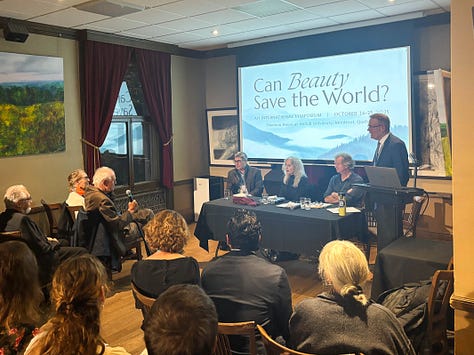
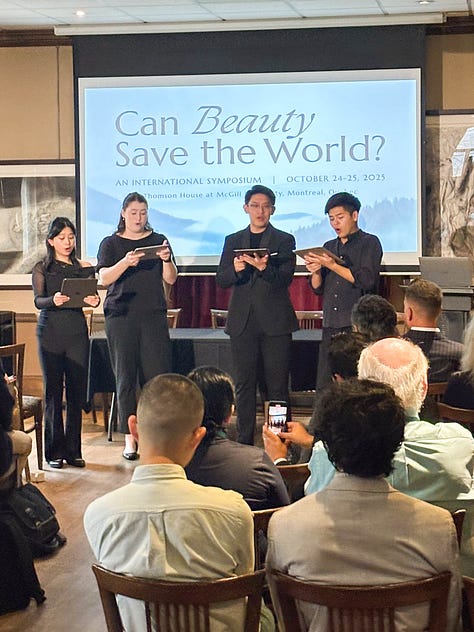


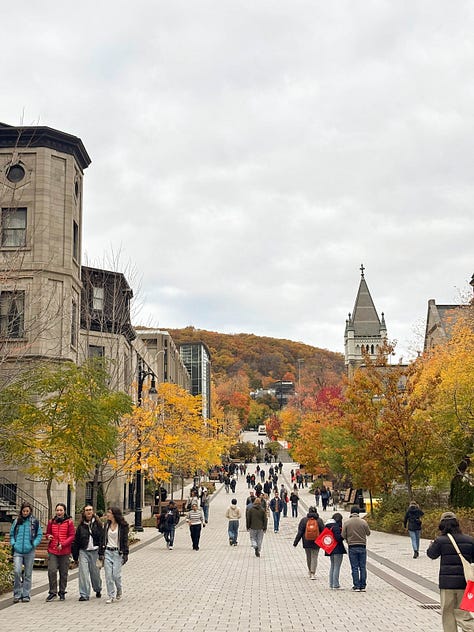
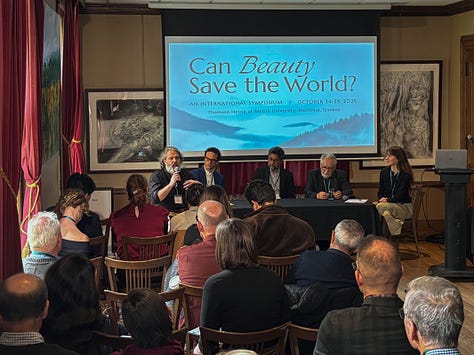
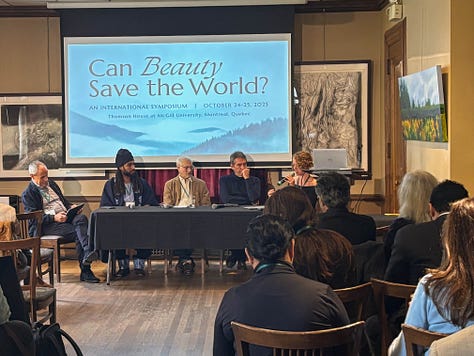
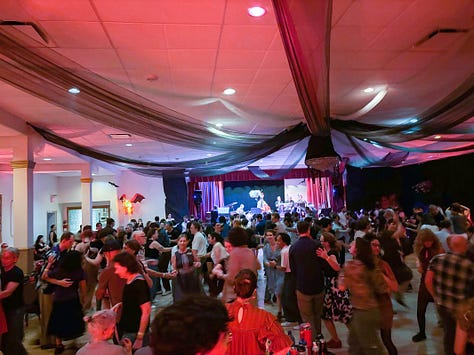
Between the panels, participants immersed themselves in beauty firsthand—through a sacred theater workshop, a guided visit to the Montreal Museum of Fine Arts, a walk through Old Montreal, a nature walk, and even live jazz and swing dancing.
Music from students at the Schulich School of Music and singer-songwriter Tiffany Thompson added grace to our event.
By the end of the symposium, what struck me most was how communal beauty is. Whether in a choir, a conversation, or a shared silence before a painting, beauty draws us into relationship. It can make us more porous, more attentive, more alive to one another and to reality.
Beauty will not save the world by itself—but the world can’t be saved without it, and perhaps it can help us see the world as something still worth saving.


